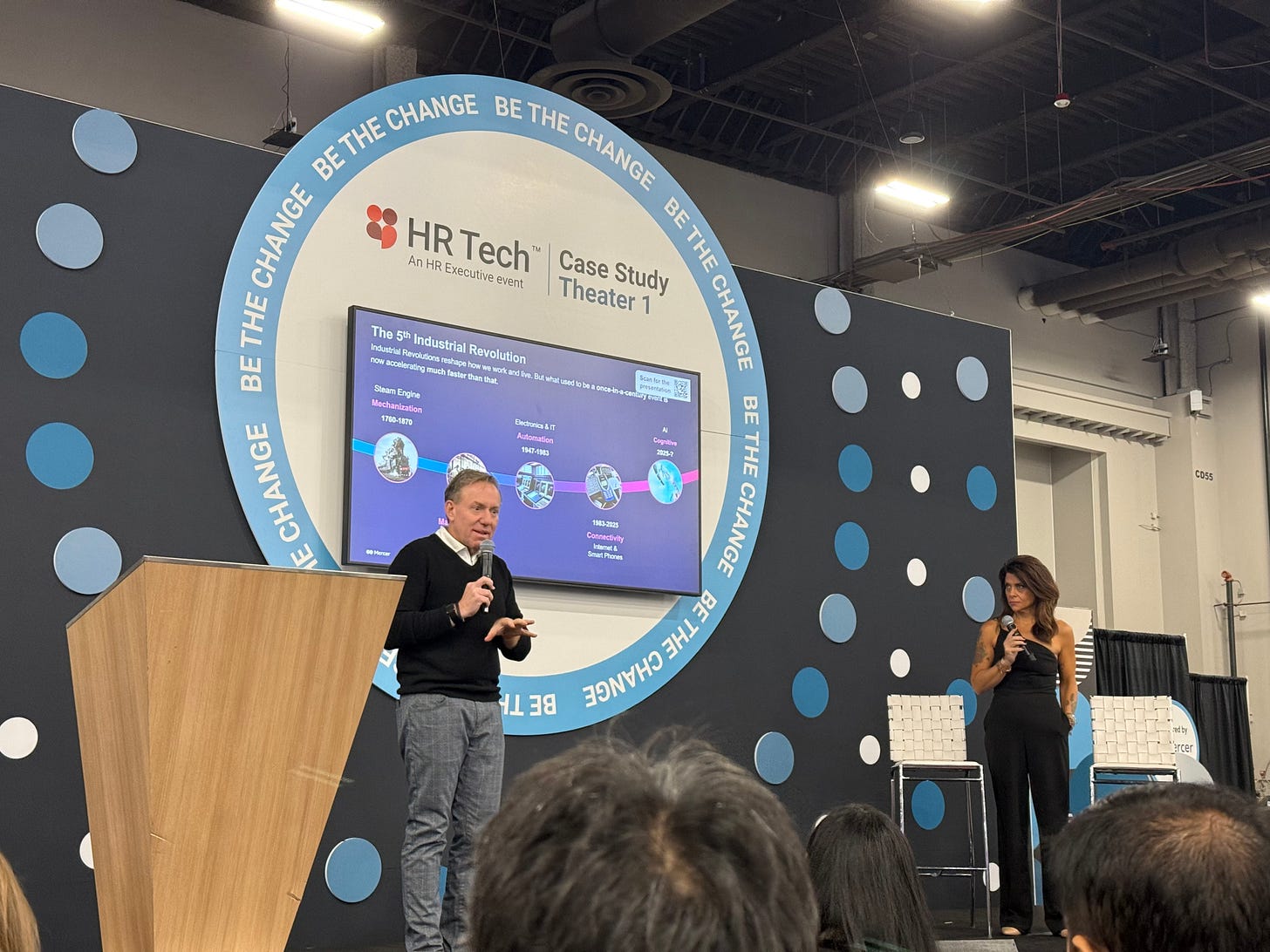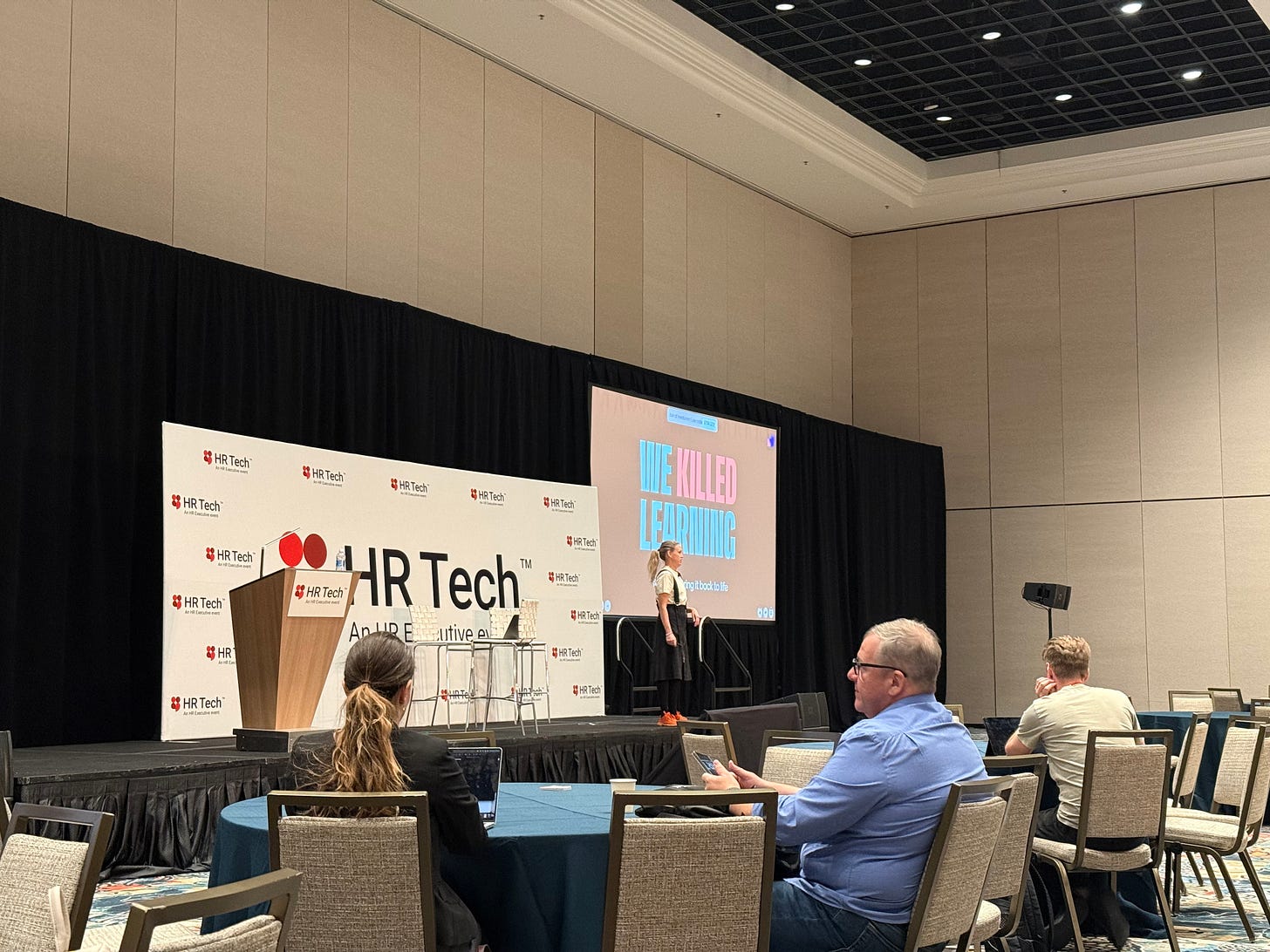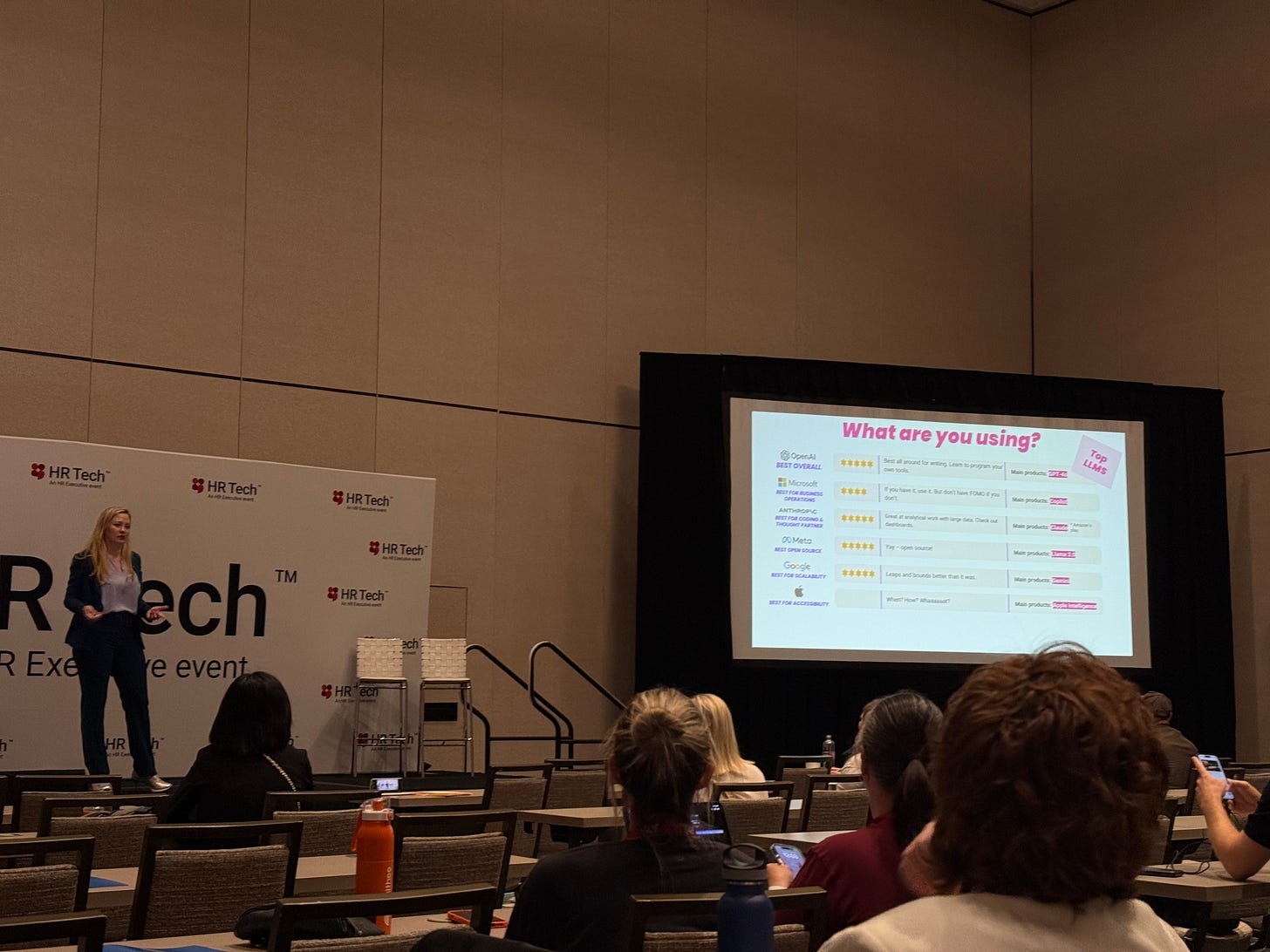HR Tech Las Vegas 2025
Agents everywhere, humans everywhere and I like the latter more.
Welcome to FullStack HR, and an extra welcome to the 32 people who have signed up since last edition.
If you haven’t yet subscribed, join the 9700+ smart, curious and like-minded future of work people by subscribing here:
Yes, I know, this is the third post this week…but it’s one of those weeks!
(Also, we’re back at 9700+ subs now because of AR, I guess…)
And this is the update from HR Tech, but the ordinary AI & future of work update will return next week.
First, let me say this: there's something about gathering ten thousand (!) HR professionals in one place. The energy, the conversations, the random encounters and people that you meet. This is where the real value lies, in the coffee line chats and corridor conversations.
The American conference energy hits different too. Tell someone you're building your own thing, and you get an instant high-five and "That's awesome!" There's an openness to experimentation, a genuine curiosity that's infectious.
I had a fantastic conversation with Jason Averbook about the future of work. Met so many incredible people with their hearts in the right place, wanting to make a difference, one step at a time. Jeff from Warden AI, Nicole from Windmill and Olivia from Bettabite with their crazy cool vision these are the folks actually pushing boundaries.
I have also met many people whom I’ve come to learn from digitally over the years. Richard Rosenow and Stacey Harris, to name a few.
And for me, this is what conferences are really about: human connection, shared challenges, and that moment when someone says something that completely shifts your perspective.
The sessions
AI as Teammate, Not Just Tool
Col Carter from Fountain perfectly framed the "agentic shift" – moving from dashboards and alerts to AI that actually DOES things: schedules interviews, verifies documents, builds shift plans. No human clicks needed.
IBM's Nickle LaMoreaux showed this at enterprise scale. Their AskHR handles 12 million interactions yearly with 94% containment – that's a 40% reduction in operating costs. Real numbers, real impact.
The Human Factor is the Real Bottleneck
Jason Averbook & Jess Von Bank brought the uncomfortable truth that AI isn't a software rollout; it's a complete re-architecture of work. What stays human? What shifts to machines? How do we build cultures that can actually adapt?
Learning Needs a Reset
Sandra Loughlin & Betsy Summers argued L&D has become too content-obsessed. "Employees don't need more libraries; they need practice, coaching, and feedback." Their provocative take: AI can finally make learning more human.
Anna Gullstrand was by far the most engaging presenter. Her session evolved around the issue of too many training sessions draining energy instead of creating it. Leaders should think like teachers, design brain-friendly experiences that grab attention and create psychological safety. She had the entire room participating, not just listening!
Dominique Rose Van-Winter: The Reality Check
Dominique's presentation talked about how most organizations are stuck in "AI-as-a-project" mode instead of embedding it into daily work. Her key message: employees experience AI adoption as change management first. HR must be the enabler of trust and skill-building, not leave it to IT.
Atlassian Shows How It's Done
The Atlassian case study was THE best session of the entire conference. This is what HR Tech presentations should be, practical, honest, and actually useful.
Alicia Lenart didn't just talk theory. She showed exactly how they are going about this and it was (as said) great.
Their Five Principles:
Start with the Why – AI must solve real business problems
Frame it as Additive – "AI helps you innovate" not "AI will replace you"
Visible Leadership – Executives demo AI tools live
Tailored Upskilling – Three tracks: technical, non-technical, leadership
Stay Agile – Weekly steering committees
Onboarding as AI Playground
They rebuilt their broken onboarding entirely around AI:
Jira Service Management orchestrates everything
New hires get personalized hubs
Managers auto-generate onboarding plans
"NORA" (their AI agent) answers questions 24/7
The Results:
60% reduction in manual onboarding work
16,000 manager hours saved annually
New hires use AI 38% more than tenured employees
By embedding AI into onboarding, every new employee learns from day one that AI is just how work gets done. That's adoption strategy disguised as employee experience.
They also said something that stuck: "We stopped asking 'should we use AI for this?' and started asking 'why wouldn't we?'"
As said, one of the best conference sessions I’ve ever attended. Took note like a madman.
The Agent Confusion
Other general thoughts. "Agentic AI" was EVERYWHERE. Every vendor, almost every session = agents, agents, agents. But almost no one could actually define what an agent is.
And when you dig deeper with vendors, most are selling sophisticated automations. Useful, but not quite the autonomous decision-making that "agent" implies.
What intrigued me further was what WASN'T being discussed: ChatGPT's current capabilities (so much HR professionals could do TODAY for free), and the scientific research validating AI's workplace impact (!!).
But then I also had a realisation because at one session, someone asked:
"Who uses Claude?"
Three hands out of 200.
"Who uses Perplexity?"
Just mine.
Good reminder that most people are not utilizing the tools to their full extent, most people are yet to discover what they are truly capable of, and we're at a fascinating inflection point. The gap between what's possible (Atlassian, IBM) and reality (those three Claude users) is massive. But that gap isn't failure, it's an opportunity, if we make it into one! (And we can and should do that.)
And we don't need perfect agents. We don't need to wait for AGI. We need to pick one broken process – like Atlassian did with onboarding – and fix it. Then another. Then another.
The tech isn't the bottleneck anymore. We are.
We need to recognize this and create workplaces where people feel safe to test tools, fail, and learn.
My biggest takeaway and the feeling I leave Vegas with is that I need to do more.
I need to do even more to help people out with this, and just like you shouldn’t sit and wait for the perfect AI solution from your IT department, neither should I.
I need to do more demos. More low-hanging fruit, more experimentation, and sharing the results.
The best is yet to come.









I was in at least 2 of these sessions. Sad I missed you